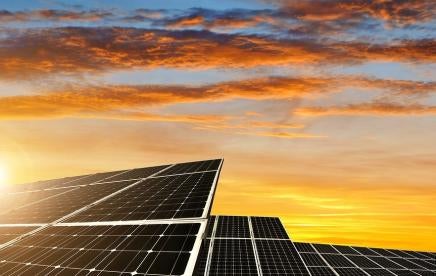As demand for solar energy has grown, employment in the U.S. solar industry has boomed to more than double the number of coal industry workers and nearly equal to employment in the natural gas industry. While solar energy jobs are among the safest in the energy sector, over the past 18 months the Occupational Health and Safety Administration (OSHA) has sought to levy large fines against some high profile solar industry employers for alleged safety violations. Others in the industry may expect increased scrutiny. But there are opportunities to enhance solar job safety and reduce compliance risks. Employers wishing to take advantage of these opportunities should seek legal advice about how to best navigate multiple applicable OSHA standards and guidance from the National Institute for Occupational Safety and Health (NIOSH).
The manufacture and installation of solar energy technologies implicates some safety challenges. Employees may be exposed to electrical risks from the panels themselves and by virtue of their proximity to high voltage power lines. To address these risks, OSHA mandates that solar energy producers connecting to the grid must implement the safe work practices laid out in the Agency’s Electric Power Generation, Transmission and Distribution standard. Employers may also be required to implement OSHA’s Control of Hazardous Energy (Lockout/Tagout) standard to assure that solar panels are covered during installation so as to prevent injuries.
Other risks involve injuries from the machinery used to manufacture solar components, accidents involving the cranes used to hoist up solar panels, and falls during panel installation. Less obvious risks of solar technologies include chemical exposures from battery back-up systems or from the panels themselves. It should be noted that OSHA requirements with respect to these risks can vary depending on how an employee is servicing a solar panel. For example, the Agency has different fall protection requirements for employees installing solar panels than it does for those who are merely maintaining them.
The industry is admirably committed to further reducing these risks. The Solar Energy Industries Association (SEIA), a trade association dedicated to expanding the nation’s solar capabilities, offers its members guidance on workplace best practices and participates in federal safety initiatives. The Center for Construction Research and Training also recently developed a safety protocol that seeks to apply novel principles of Prevention through Design (PtD) to solar panel installation. A NIOSH initiative, PtD is aimed at “designing out” hazards through a comprehensive approach which incorporates worker safety considerations as early as possible in the life cycle of equipment and work spaces. To remain on the cutting edge of improving safety, solar industry employers should not only implement existing best practices to reduce accident risks, but should also become well versed in OSHA requirements and NIOSH guidance.




 i
i


